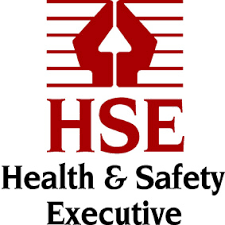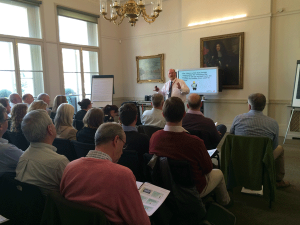UK workplace fatality statistics published
Provisional annual data for work-related fatal accidents in Great Britain’s workplaces has been released, with 2015/16 figures slightly up from the previous year.
As these figures have just been released, I thought it would be of interest to all to see how your industry or region is coping.
This week’s 2 recent HSE cases look at accidents that should never have happened.
- 45-year-old, father of four has been severely affected by his injuries. He has undergone several operations to rebuild his foot. He is still in constant pain and is unable to work
- Two employees were working in the room and an agency worker was present in the magazine when the ignition occurred.
As ever, if you have a subject that you would like us to cover one week, please contact us by phone 01458 253682, email or via our Facebook page or by Twitter
Annual wo rkplace fatality statistics published.
rkplace fatality statistics published.
Provisional annual data for work-related fatal accidents in Great Britain’s workplaces has been released, with 2015/16 figures slightly up from the previous year.
The long term trend has seen the rate of fatalities more than halve over the last 20 years. However, provisional figures indicate that 144 people were killed while at work in 2015/2016 – up from 142 in 2014/2015.
Key statistics
By industry sector
The new figures show the rate of fatal injuries in key industrial sectors:
- Forty three workers died in construction, the same as the average for the previous five years.
- In agriculture there were 27 deaths (compared to the five-year average of 32).
- In manufacturing there were 27 deaths (compared to five-year average 22), but this figure includes three incidents that resulted in a total of eight deaths.
- There were six fatal injuries to workers in waste and recycling, compared to the five-year average of seven, but subject to considerable yearly fluctuation.
By region
In 2015/16 the highest fatal injury rates across all countries and regions were:
- Wales (0.93 per 100,000 workers);
- Scotland (0.60); and
- Yorkshire and the Humber (0.58).
Due to the relatively small numbers and to reduce some of the yearly fluctuation, when averaged across a five-year time period to 2014/15 those regions with the highest fatal injury rates were also:
- Wales (0.81),
- Scotland (0.73) and
- Yorkshire and the Humber (0.70).
Members of the public
- There were 103 members of the public fatally injured in accidents connected to work in 2015/16, of which 36 (35 percent) related to incidents occurring on railways.
Asbestos
- HSE has also released the latest available figures on deaths from asbestos-related cancer. Mesothelioma, one of the few work related diseases where deaths can be counted directly, contracted through past exposure to asbestos killed 2,515 in Great Britain in 2014 compared to 2,556 in 2013.
Further information on these statistics can be found at http://www.hse.gov.uk/statistics/fatals.htm
Comparisons with previous years
The average rate of fatal injury over the last five years has been 0.53 per 100, 000 workers. In each of the last five years, the number of fatal injuries has been:
- 2014/15 – 142 workers died
- 2013/14 – 136 workers died
- 2012/13 – 150 workers died
- 2011/12 – 171 workers died
- 2010/11 – 175 workers died
- 2009/10 – 147 workers died
The Health and Safety Executive has called on all sectors to learn lessons to ensure workers return home safe from work.
Martin Temple, HSE Chair said:
“One death at work or life needlessly shortened, is one too many and behind every statistic lies a real story of loss and heartbreak and families left to grieve.
“Britain has one of the best health and safety systems in the world, but we should always be looking to improve and to prevent incidents that cost lives.
“This year HSE travelled the country asking industry representatives, employers, unions, workers and others what they could do to help GB work well. The response was hugely encouraging and I would like to ask people to deliver on the commitments made, that will help keep Britain’s workers alive.”
A more detailed assessment of the data will be provided as part of the annual Health and Safety Statistics release in early November. As this draws on HSE’s full range of sources, including changes in non-fatal injuries and health trends, and will provide a richer picture on trends.
The statistics again confirm the UK to be one of the safest places to work in Europe, having one of the lowest rates of fatal injuries to workers in leading industrial nations.
Find out more about the statistics here: http://www.hse.gov.uk/statistics/fatals.htm
Is there any subject you would like covered in this newsletter? Please contact us by phone 01458 253682 or email and let us know.
Training Courses
Our next batch of courses will start in September after the holiday period.
These will include:
- Liability for Accidents and Ill Health at Work
- CDM Regulations 2015 – An Awareness Course
- SMSTS (Site Management Safety Training Scheme)
- Asbestos Awareness
- Treat Health the same as Safety
- Manual Handling
- First Aid
But remember we are still available for running ‘In House’ courses.
If you have any questions about these courses or any other training or would like us to run a particular course for you, call Jon Wilkins of the Wilkins Safety Group on 01458 253682 or email him.
We have got a Safety Awareness update ‘In House’ course booked for a local firm of Electricians in July and 2 ‘Mercury Spillage’ courses, again ‘In House’ booked for the National Trust in September. So if you would like a bespoke course run at your place of work, why not contact us to see what we can do?

Your Business is Safer in our Hands

